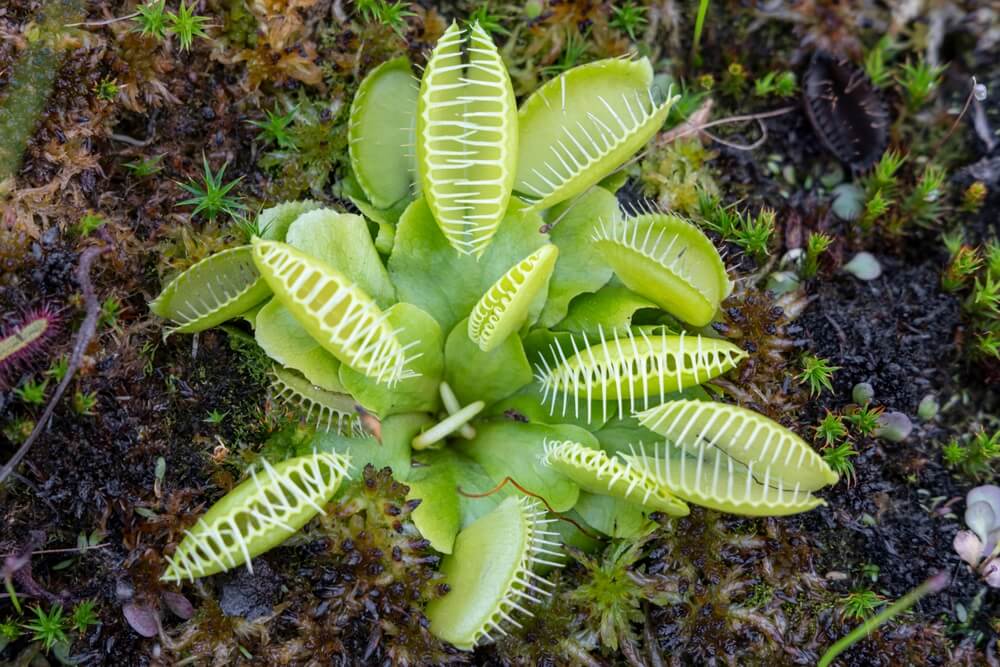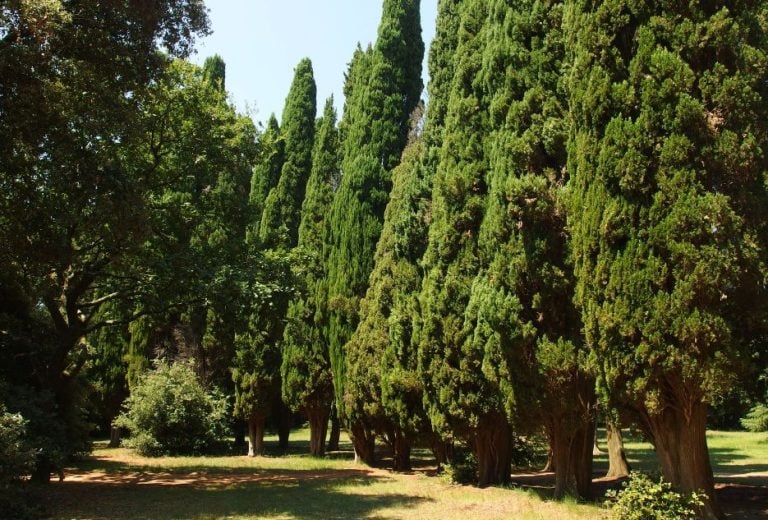15 Hungry Carnivorous Plants That Devour Flies, Ants, And Bugs!
Welcome! This article contains affiliate links, meaning I get a commission if you decide to make a purchase through my links, at no extra cost to you.
October always gets me thinking about the spooky side of nature. Most folks spend this time of year worried about ghosts and goblins. Meanwhile, I’m fascinated by the real terrors lurking in bogs, swamps, and greenhouses across the country. Chief among these natural nightmares are carnivorous plants – gorgeous, deadly, and absolutely HUNGRY for bugs!
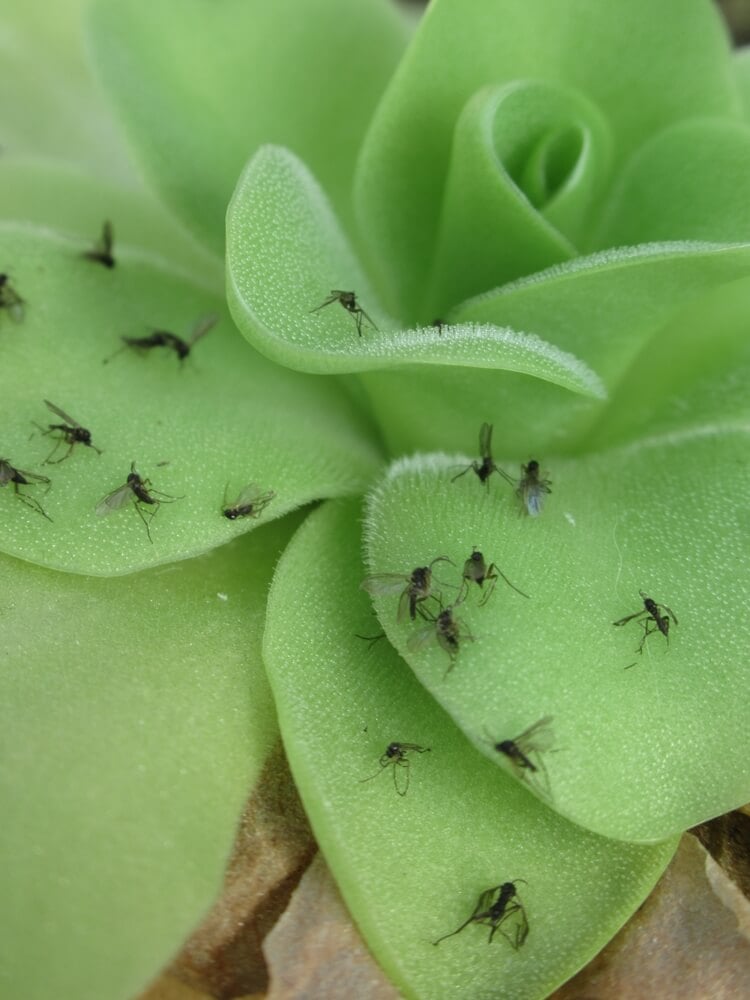
Sound intriguing?
Then, let’s brainstorm 15 of the most spectacularly spooky carnivorous plants that hungrily DEVOUR bugs by the bucket!
15 Amazing, And HUNGRY Carnivorous Plants That Eat Baskets Of Bugs!
From snap traps that close in milliseconds to pitcher plants that can hold liters of digestive fluid, here’s your complete guide to nature’s most fascinating predators.
1. Venus Flytrap (Dionaea muscipula)
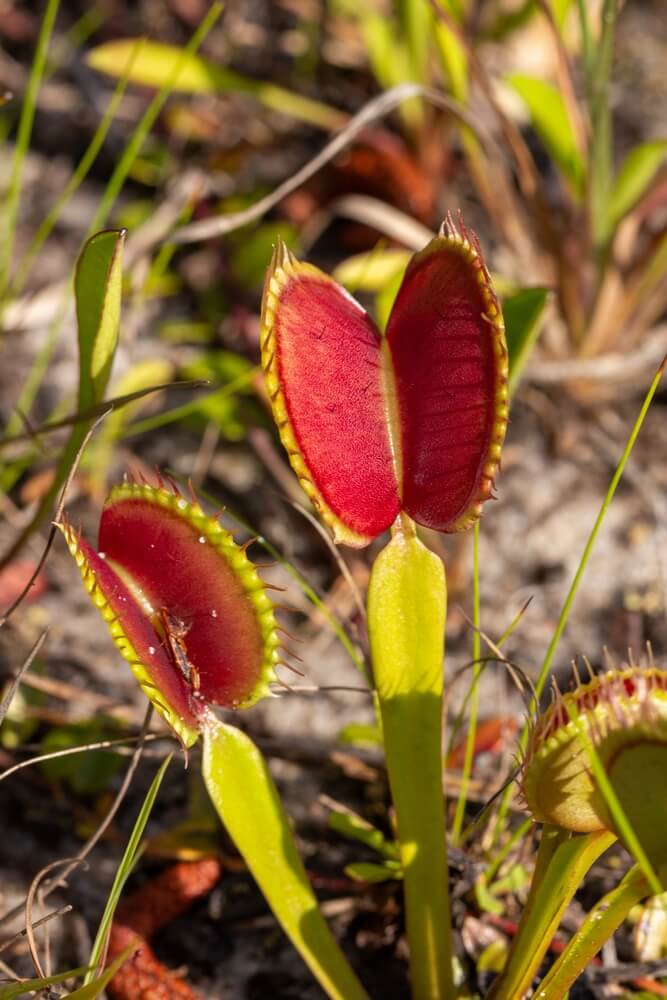
The Venus Flytrap is arguably the most iconic carnivorous plant. It features hinged leaves that snap shut like an iron maiden in a tenth of a second, the moment its trigger hairs detect prey. The plant employs a sophisticated and ingenious counting mechanism. It works by requiring two touches within twenty seconds to avoid wasting energy on false alarms like raindrops.
- USDA Growing Zones: Zones 7 to 10, thrives outdoors in the Southeast and can overwinter with protection in cooler areas.
- Favorite Bugs: Flies, spiders, ants, beetles, grasshoppers, and crawling insects that trigger the sensitive hairs.
- Plant Size: Compact and low-growing, typically 4 to 6 inches across in a neat rosette, with traps reaching 1 to 2 inches in length.
Native to the Carolinas and ideally suited to USDA zones 7 through 10, Venus Flytraps are surprisingly beginner-friendly when given their preferred boggy, acidic conditions and pure water.
2. North American Pitcher Plant (Sarracenia spp.)
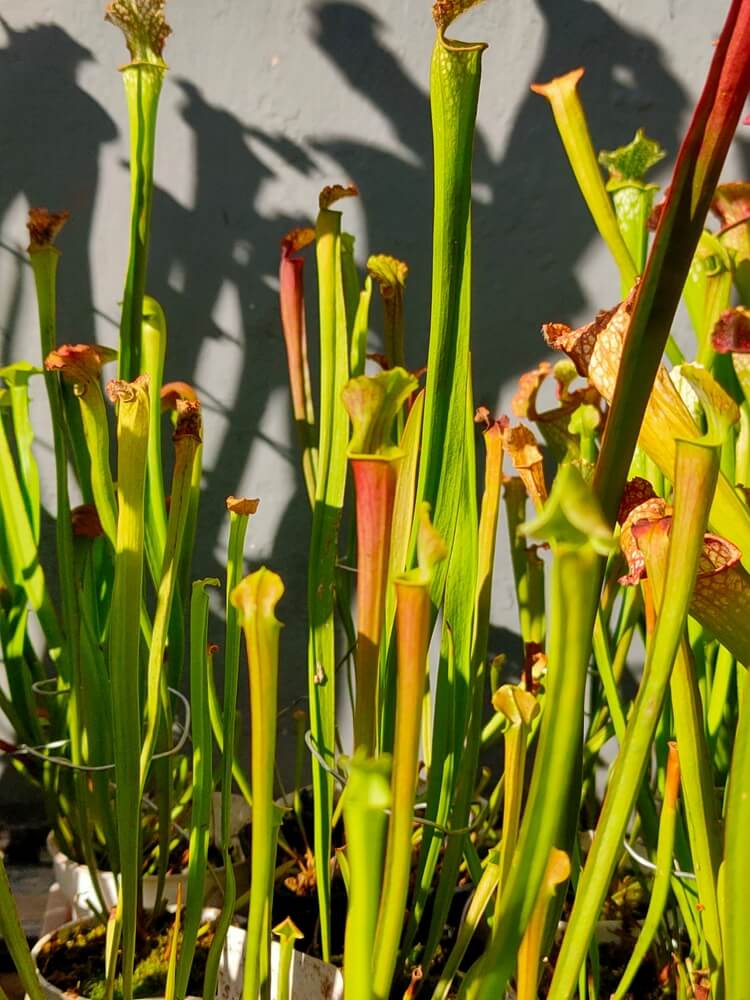
Sarracenia species are architectural marvels that transform leaves into deadly pitfall traps. They sport downward-pointing hairs and slippery walls that guide insects toward pools of digestive enzymes. These stunning beauties offer dual benefits. They’re phenomenal at controlling flying insects around outdoor spaces. They also provide stunning vertical interest with their colorful, tubular forms.
- USDA Growing Zones: Zones 6 to 9, with S. purpurea hardy even to Zone 5 in some locations.
- Favorite Bugs: Flies, wasps, bees, moths, ants, beetles, and any flying or crawling insects attracted to nectar.
- Plant Size: Varies by species from 6 inches (S. purpurea) to 3 feet tall (S. flava, S. leucophylla).
The purple pitcher plant (S. purpurea) demonstrates remarkable cold hardiness, surviving harsh winters with ice-filled pitchers. But the sarracenia’s REAL splendor reveals itself with the lovely spring flowers, held high above the pitchers. The blooms attract pollinators. The leaves below handle unwanted insects.
3. Tropical Pitcher Plant (Nepenthes spp.)
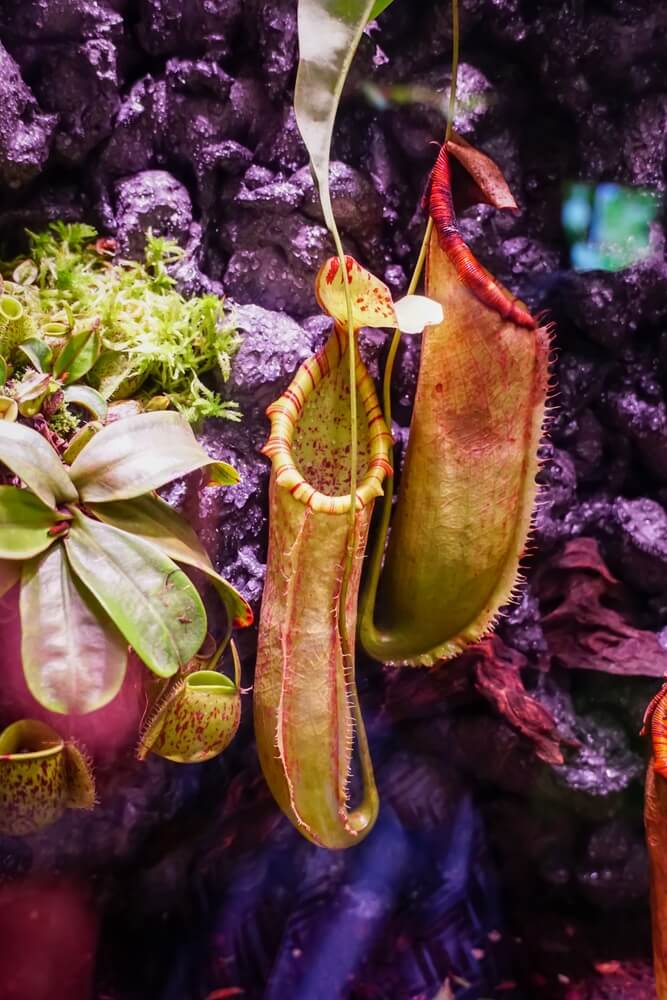
Nepenthes produces hanging, vase-shaped traps that represent evolutionary engineering at its finest. It features slippery peristomes and intoxicating nectar that lure insects to their doom. The largest species, N. rajah, creates pitchers capable of holding over two liters of digestive fluid and has been documented capturing small vertebrates, making it a true apex predator of the plant world.
- USDA Growing Zones: Zones 10 to 11 outdoors (lowland species). Most must be grown indoors or in greenhouses in heated, humid environments.
- Favorite Bugs: Flies, mosquitoes, moths, ants, wasps, beetles, and occasionally small lizards or rodents in large numbers.
- Plant Size: Highly variable. Vines can reach 15 to 30 feet with pitchers ranging from 2 inches to over 12 inches tall, depending on species.
Nepenthes provide exceptional fly and mosquito control for anyone with a greenhouse. They also add exotic visual interest with their fancy dangling traps.
Read More – The Ultimate Guide To Growing Pawpaw Trees – From Seed To Backyard Harvest!
4. Sundew (Drosera spp.)
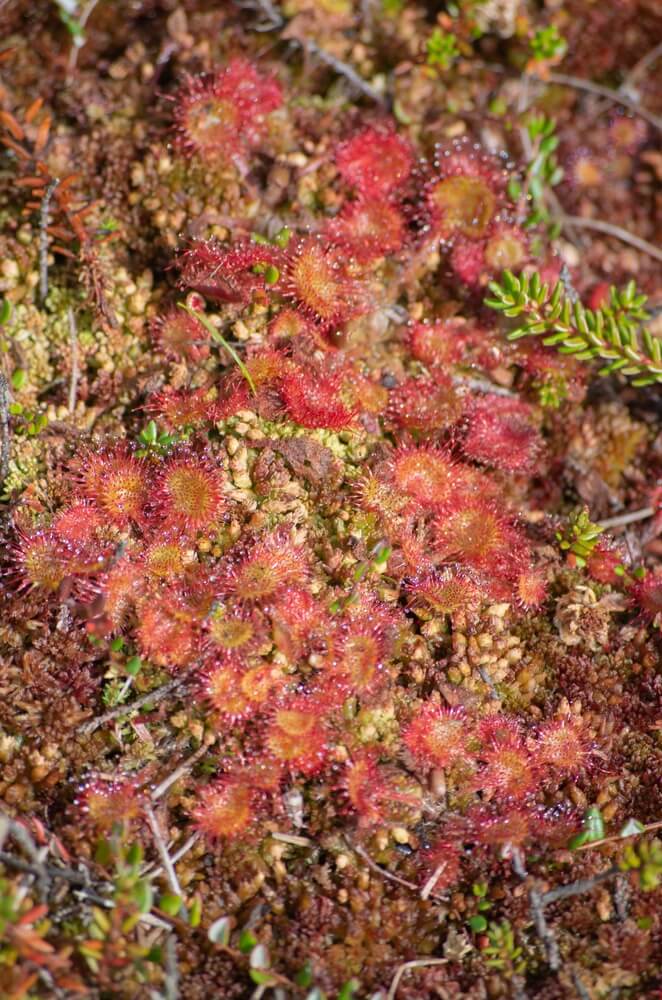
Sundews employ a deceptively beautiful hunting strategy. They cover their leaves with ruby-red tentacles that glisten like morning dew. This sparkling dew acts like an incredibly effective flypaper. Once an insect contacts the sticky mucilage, the leaf slowly curls around its prey. These plants love fungus gnats, fruit flies, and other small pests in greenhouses and terrariums.
- USDA Growing Zones: Zones 7 to 9 for hardy species like D. rotundifolia. Tropical species must be grown indoors or in greenhouses.
- Favorite Bugs: Fungus gnats, fruit flies, mosquitoes, small moths, aphids, and other tiny flying insects.
- Plant Size: Ranges from 1 inch (D. spatulata) to 12 inches across (D. capensis), with some tropical species growing trailing stems several feet long.
Sundews’ sticky secretions are so effective that they inspired early adhesive research. Many species like D. capensis are remarkably vigorous, self-seeding freely in favorable conditions.
5. Butterwort (Pinguicula spp.)
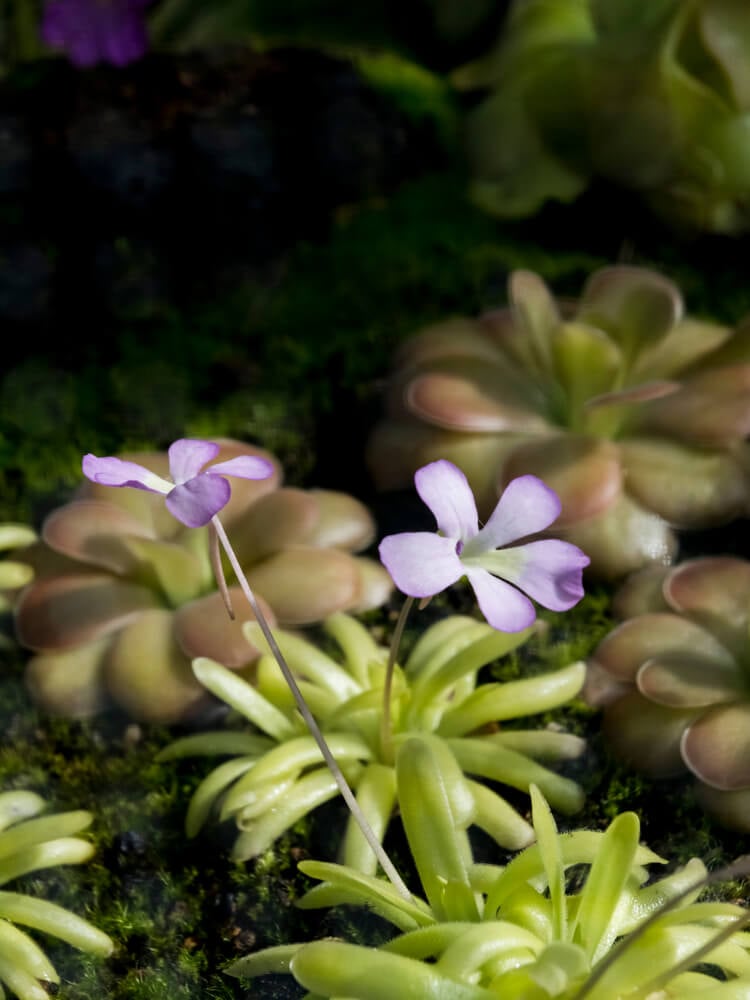
Butterworts take a more subtle approach with their innocent-looking, succulent-like leaves that secrete a greasy, enzyme-laden mucilage to trap small insects. These understated predators are exceptional at controlling aphids, whiteflies, and thrips. Mexican species like P. moranensis produce stunning orchid-like flowers that provide ornamental value beyond their carnivorous function.
- USDA Growing Zones: Zones 4 to 8 for temperate species like P. vulgaris. Mexican species thrive in Zones 9 to 10 or indoors.
- Favorite Bugs: Aphids, whiteflies, thrips, fungus gnats, fruit flies, and other small, soft-bodied insects.
- Plant Size: Compact rosettes typically 2 to 4 inches across, with flower stalks reaching 4 to 8 inches tall.
Butterwort’s low-maintenance nature and tolerance for varying conditions make it ideal for homesteaders seeking functional beauty. And, there are no fussy care requirements.
6. Bladderwort (Utricularia spp.)
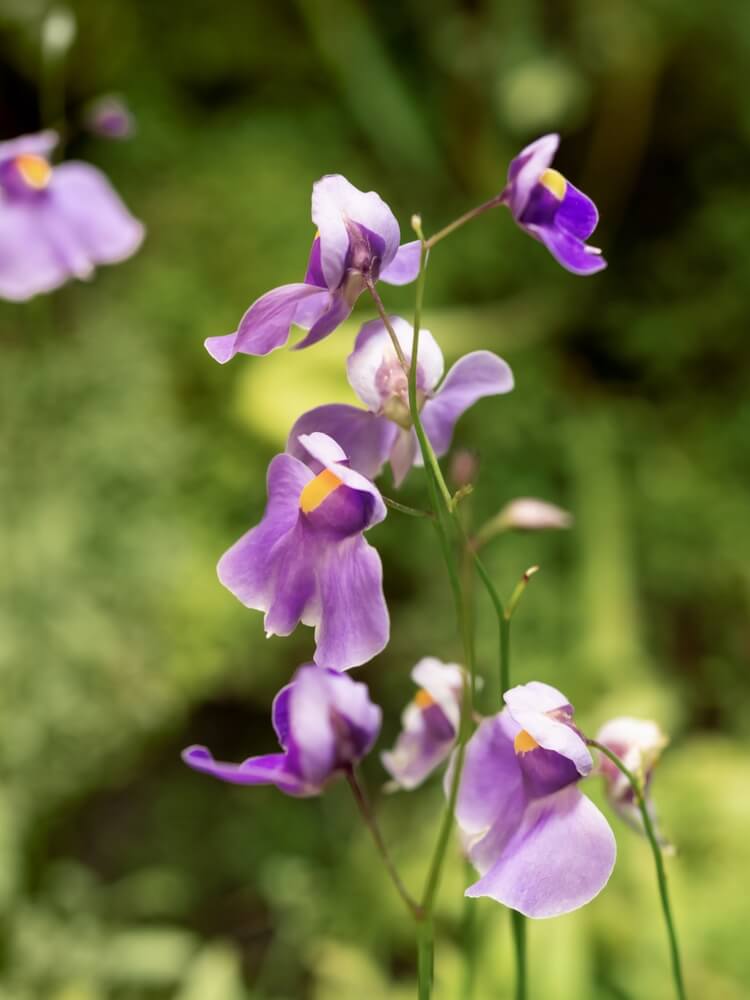
Bladderworts possess the fastest trapping mechanism in the plant kingdom. These remarkable plants use tiny bladders to create negative pressure vacuums. Those vacuums can suck in prey in less than a millisecond! Aquatic species provide natural mosquito larvae control in ponds and water features. Terrestrial varieties can help control soil-dwelling pests like fungus gnat larvae and nematodes when grown in greenhouse settings.
- USDA Growing Zones: Zones 4 to 9 for aquatic species in outdoor ponds. Terrestrial species are often grown indoors in terrariums.
- Favorite Bugs: Mosquito larvae, water fleas, daphnia, protozoa, tiny aquatic invertebrates, and soil nematodes (terrestrial species).
- Plant Size: Aquatic species form floating mats several inches to feet across. Terrestrial species create tiny rosettes under 1 inch with 2 to 6 inch flower stalks.
Despite their microscopic traps and delicate appearance, Bladderworts are aggressive colonizers. They can quickly fill available space with cheerful flowers rising above the foliage.
Read More – How To Attract Bats To Your Garden – 13 Epic Flowers And Shrubs That Bats Love!
7. Cobra Lily (Darlingtonia californica)
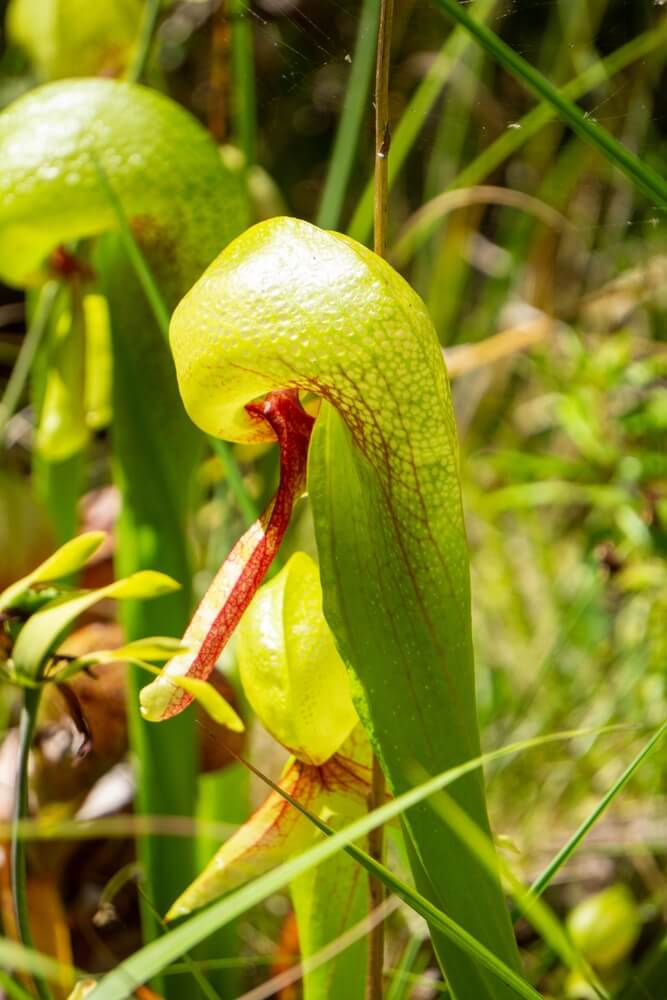
The Cobra Lily employs psychological warfare with its iconic hooded, serpent-like pitchers. They feature translucent windows that confuse trapped insects into exhausting themselves against false exits. The only trouble is that this California native requires unique growing conditions. It needs explicitly cold, moving water around its roots. This weird requirement makes it challenging – but rewarding for dedicated growers seeking something truly unusual.
- USDA Growing Zones: Zones 6 to 9, but requires specialized cool root conditions even in suitable zones.
- Favorite Bugs: Ants, beetles, wasps, flies, and other crawling or flying insects attracted to the hood’s nectar glands.
- Plant Size: Mature pitchers reach 12 to 36 inches tall, forming impressive clumps that spread slowly through rhizomes.
The forked appendage dangling from the hood resembles a snake’s tongue, completing the predatory illusion that makes this one of the most architecturally striking carnivorous plants.
8. Waterwheel Plant (Aldrovanda vesiculosa)
Aldrovanda is an aquatic Venus Flytrap. It floats rootless through still waters. It also deploys tiny snap traps arranged in whorls along its stem. This rare plant provides natural control of mosquito larvae and other aquatic microorganisms in specialized water features or outdoor ponds.
- USDA Growing Zones: Zones 6 to 9 in outdoor ponds, though often grown indoors in aquariums due to difficulty.
- Favorite Bugs: Water fleas, mosquito larvae, daphnia, tiny aquatic crustaceans, and other microscopic aquatic prey.
- Plant Size: Delicate floating stems only 2 to 4 inches long with tiny traps measuring just 2 to 3 millimeters across.
Aldrovanda’s rootless lifestyle means it obtains all nutrients from prey. It’s a fascinating example of complete carnivorous adaptation.
9. Corkscrew Plant (Genlisea spp.)
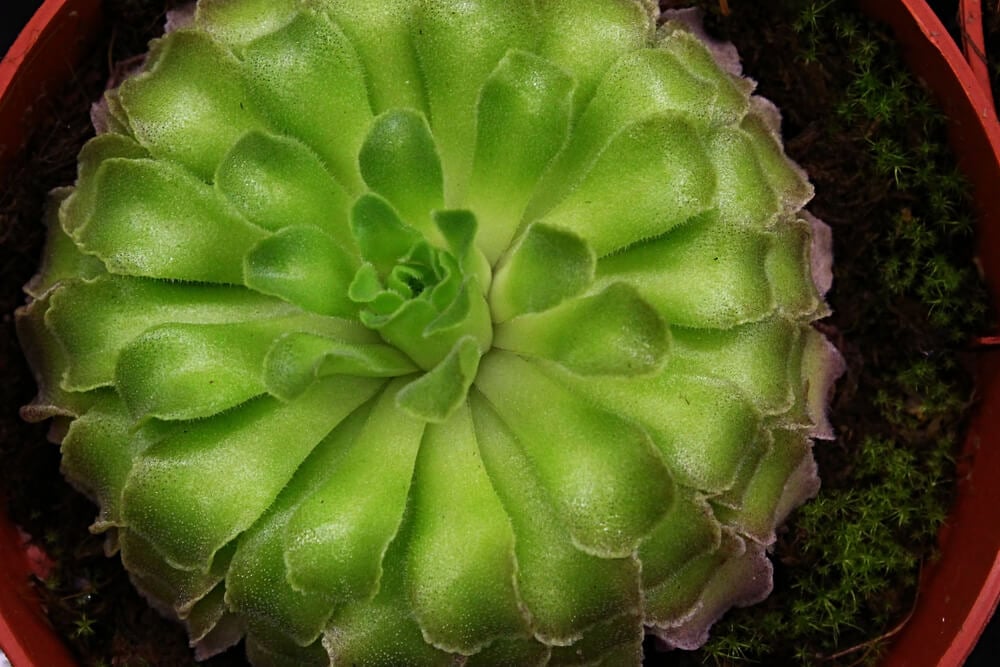
Genlisea operates like an underground horror story. It sends spiral-shaped subterranean traps into the soil where inward-pointing hairs create a one-way maze for microscopic prey. These hidden hunters target soil nematodes and protozoa. The above-ground portion produces delicate, snapdragon-like flowers in vibrant purples and yellows. But the real action happens below!
- USDA Growing Zones: Zones 8 to 10 outdoors. Most commonly grown indoors in terrariums due to specific humidity needs.
- Favorite Bugs: Soil nematodes, protozoa, bacteria, and other microscopic organisms living in wet substrates.
- Plant Size: Tiny plants with above-ground rosettes under 1 inch and flower stalks reaching 4 to 8 inches tall.
Genlisea’s unique hunting strategy represents one of the most specialized carnivorous adaptations! It proves that not all predators need to be showy.
Read More – Stop Buying Garden Plants – Grow These 21 Perennials From Scraps And Stems!
10. Australian Pitcher Plant (Cephalotus follicularis)
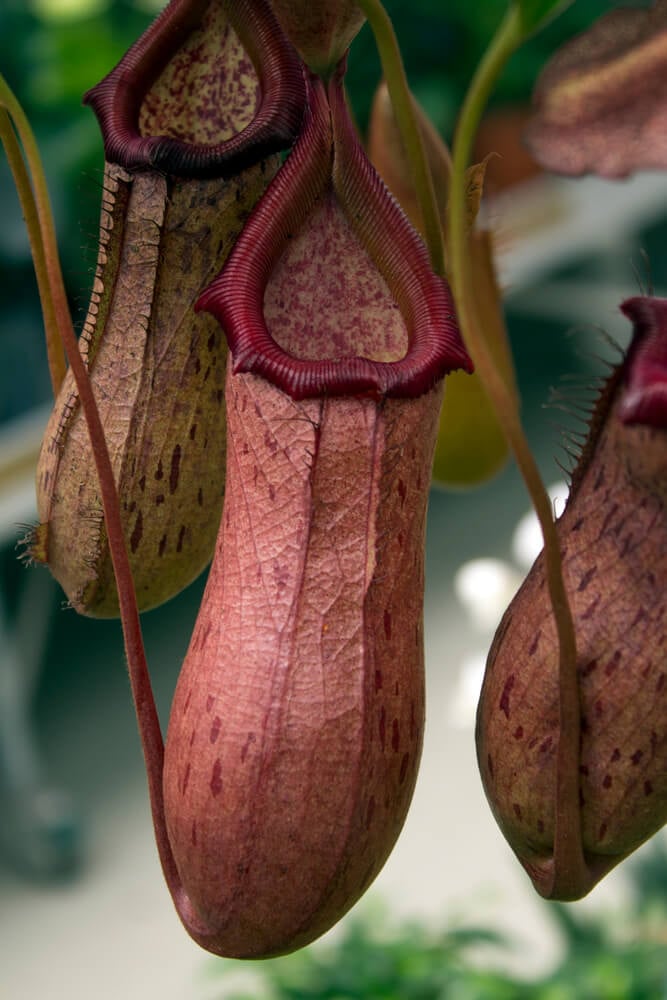
Cephalotus produces adorable, goblet-shaped pitchers. Each pitcher has notable ribs and toothed rims that make it look like a tiny ceramic vessel crafted by nature. Once inside, any curious bugs will meet an unfortunate fate! Remarkably, Cephalotus isn’t related to any other pitcher plant. It represents an entirely independent evolution of the pitfall trap strategy. In fact, pitcher traps have evolved at least three separate times in plant history through entirely distinct genetic pathways.
- USDA Growing Zones: Zones 8 to 10 outdoors in mild climates. Commonly grown as a houseplant in terrariums nationwide.
- Favorite Bugs: Ants, fruit flies, fungus gnats, small beetles, and other tiny crawling or flying insects.
- Plant Size: Compact and ground-hugging, with rosettes 4 to 6 inches across and pitchers only 1 to 2 inches tall.
Cephalotus cleverly produces both carnivorous pitchers and normal leaves. So, it can photosynthesize efficiently while supplementing its diet with captured prey.
11. Rainbow Plant (Byblis spp.)
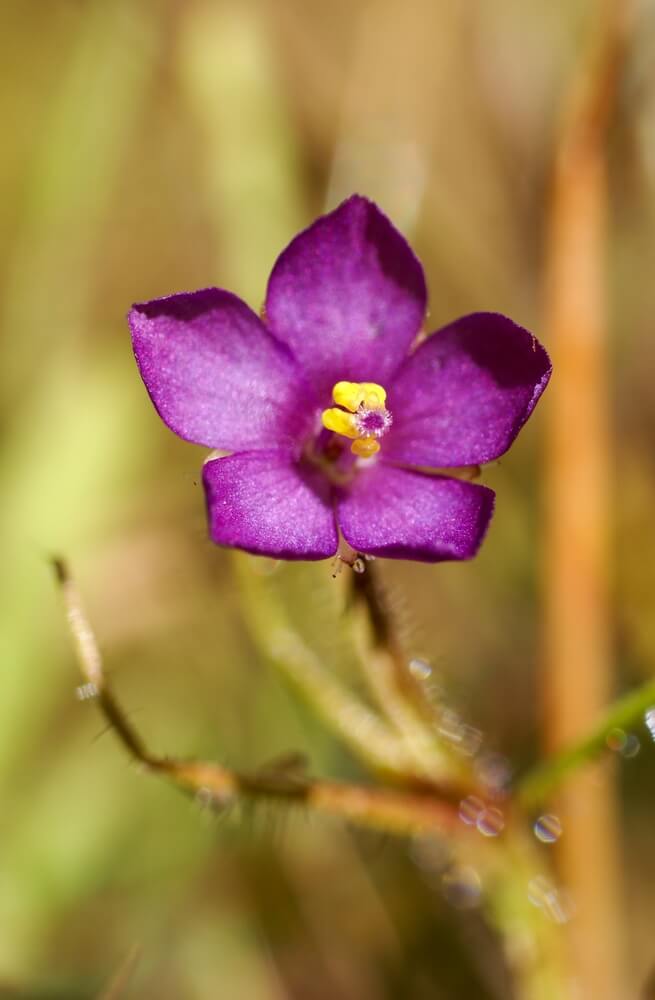
Byblis plants shimmer with spectral beauty. If you look closely, you’ll notice countless glandular hairs refracting light across their slender leaves. This magnificent shimmer earns them the “rainbow plant” nickname. These sticky-leaved predators are most effective against small flying insects in greenhouse environments. They function similarly to sundews but with a more upright growth habit.
- USDA Growing Zones: Zones 9 to 11 outdoors. Typically grown indoors or in greenhouses. Often treated as annuals.
- Favorite Bugs: Fruit flies, fungus gnats, small moths, midges, and other tiny flying insects.
- Plant Size: Slender, upright plants growing 6 to 18 inches tall, depending on species, with narrow leaves creating an airy appearance.
Don’t judge the Byblis by its delicate appearance! The entire plant surface serves as an effective insect trap.
12. Sun Pitcher (Heliamphora spp.)
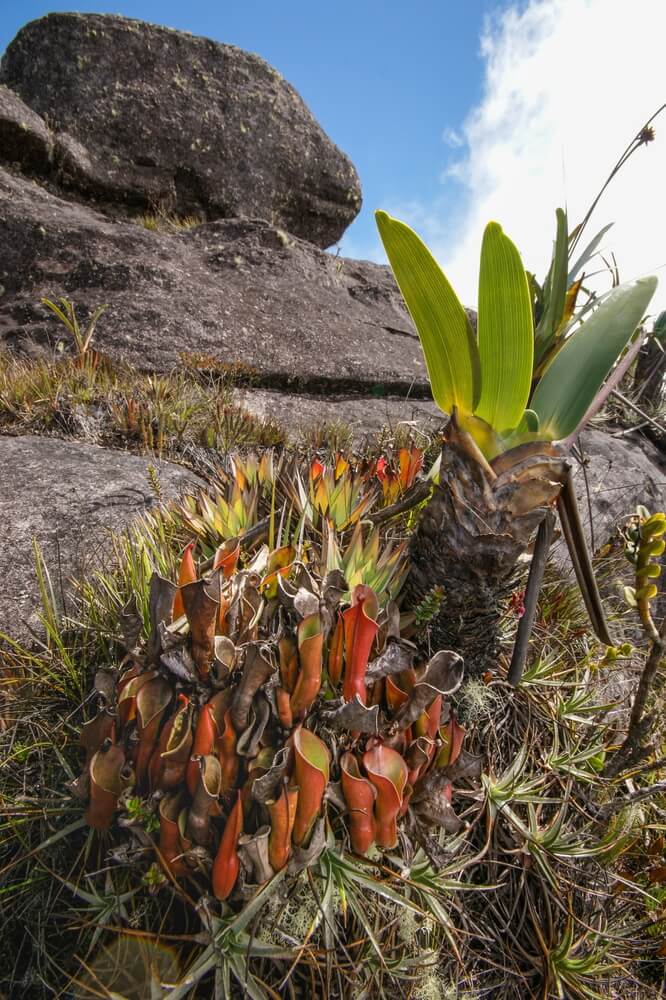
Heliamphora species hail from the mysterious tepuis of South America. These epic plants produce elegant, tubular pitchers topped with a nectar-secreting spoon that serves as both lure and rain shield. They’re admittedly very hard to grow! But the striking red and green coloration of many species provides exceptional ornamental value for advanced growers with proper greenhouse climate control.
- USDA Growing Zones: Must be grown indoors in specialized greenhouses or cabinets with cool nights and high humidity. Not suitable for outdoor cultivation.
- Favorite Bugs: Flies, small moths, ants, beetles, and other insects attracted to the nectar spoon.
- Plant Size: Pitchers range from 4 to 18 inches tall, depending on species, forming attractive clumping rosettes.
Heliamphora’s remote, high-altitude origins make them challenging to cultivate. But successfully growing these plants offers a glimpse into one of Earth’s most isolated ecosystems!
Read More – 21 Low-Maintenance Xeriscaping Plants For Stunning, Water-Wise Gardens!
13. Brocchinia reducta
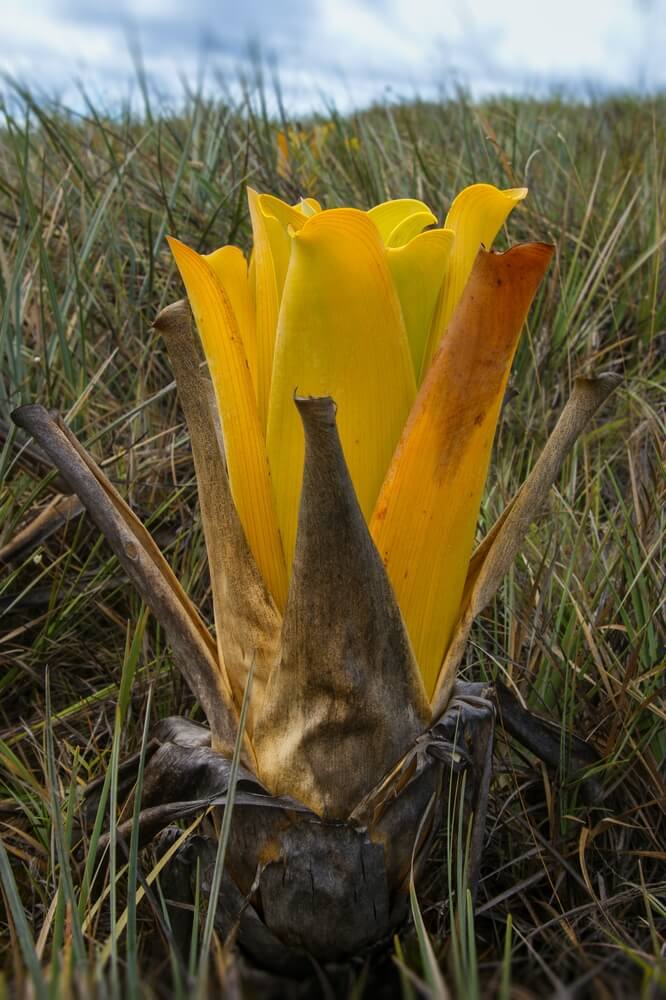
This carnivorous bromeliad proves that the pineapple family has a dark side. It forms tight urn-shaped rosettes that function as passive pitfall traps. The highly reflective surfaces and UV-absorbing properties may help lure insects into the deadly pool. And then, the waxy, slippery interior prevents escape.
- USDA Growing Zones: Zones 9 to 11 outdoors in tropical conditions. This bromeliad plant is usually grown as a houseplant in warm, humid terrariums.
- Favorite Bugs: Flies, ants, beetles, small moths, and other insects that fall into the water-filled central urn.
- Plant Size: Compact rosettes 6 to 12 inches across and 8 to 15 inches tall.
Brocchinia’s bacterial digestion system represents a more primitive carnivorous strategy. It relies on symbiotic microorganisms rather than plant-produced enzymes to break down prey!
14. Roridula dentata
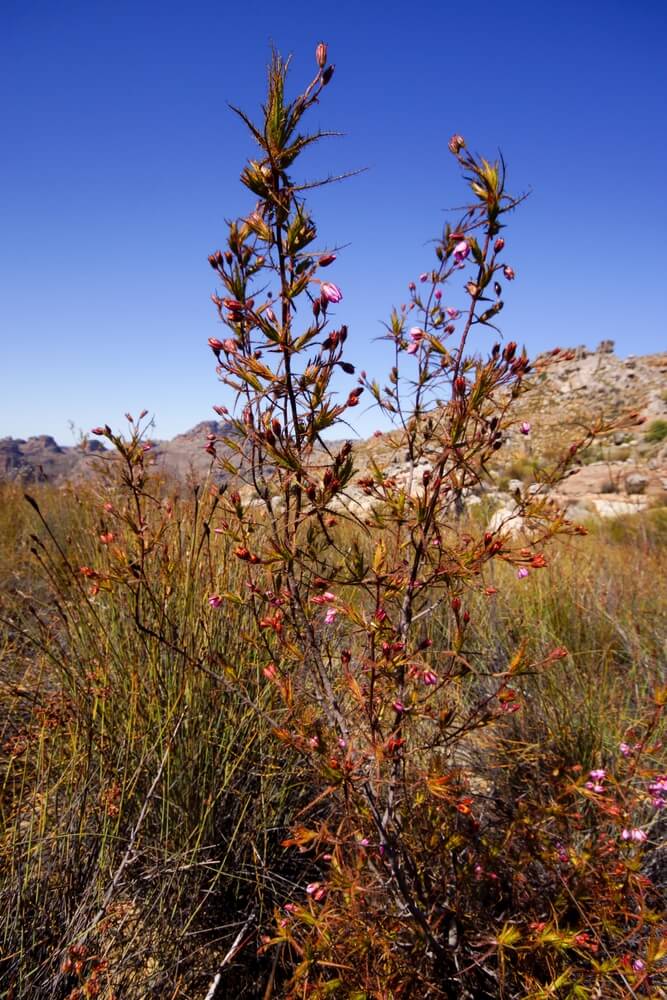
Roridula takes the collaborative approach to carnivory. It produces sticky and resinous leaves that trap insects. But the weird part is that it outsources digestion to symbiotic assassin bugs that live on the plant. The bugs consume trapped prey and provide nutrients through their droppings, creating a fascinating mutualistic relationship.
- USDA Growing Zones: Zones 9 to 10 with Mediterranean conditions (dry summers, wet winters). Typically grown in specialized greenhouses.
- Favorite Bugs: Flies, moths, beetles, wasps, and other medium to large flying insects (trapped for symbiotic bugs to eat).
- Plant Size: Shrubby plants growing 2 to 4 feet tall with woody stems and dense, sticky foliage.
Roridula’s dense, sticky foliage is remarkably effective at capturing large numbers of insects – even if the plant itself doesn’t directly digest them.
15. Dewy Pine (Drosophyllum lusitanicum)
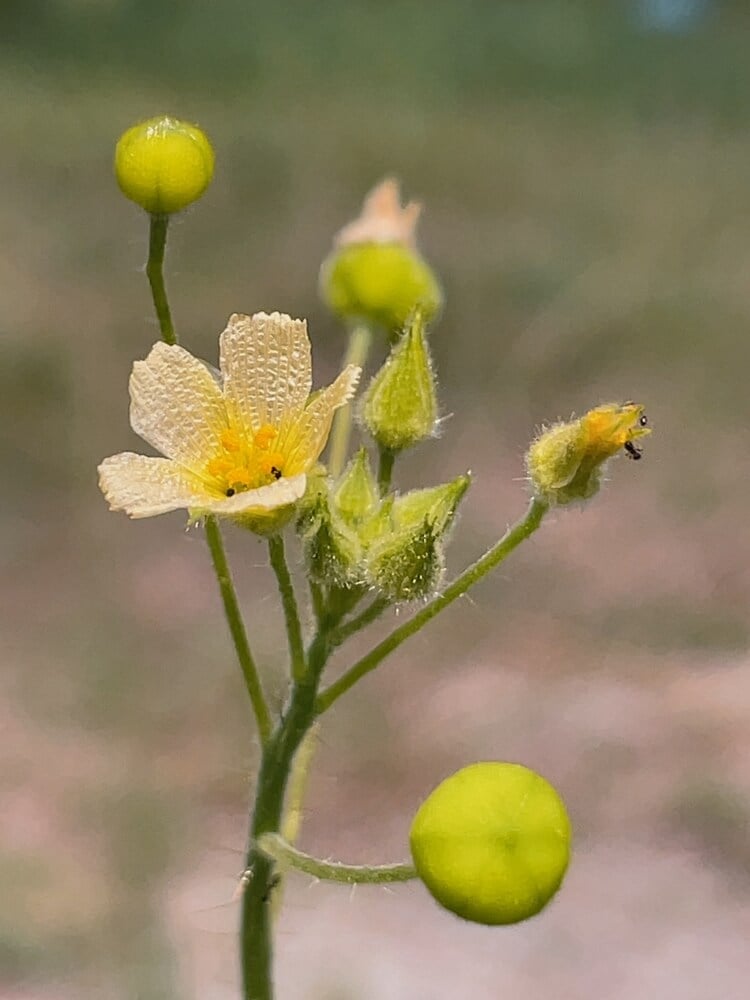
The Dewy Pine breaks carnivorous plant conventions by preferring well-drained soil and dry conditions between waterings, unlike its bog-loving relatives. Its woody stems and narrow, mucilage-covered leaves create an effective barrier against crawling insects. This plant produces a powerful, honey-like scent that attracts flies and other insects to a sticky doom.
- USDA Growing Zones: Zones 8 to 10 with Mediterranean conditions. Often grown in greenhouses to control watering precisely.
- Favorite Bugs: Flies (especially attracted to the strong scent), moths, gnats, and other flying insects.
- Plant Size: Upright, woody stems growing 8 to 15 inches tall.
The Dewy Pine’s combination of unusual cultural requirements and effective trapping makes it an intriguing challenge for experienced growers looking to diversify beyond typical carnivorous plant care.
Read More – How To Grow Gorgeous Japanese Maple Trees From Seed In Your Home Garden – The Ultimate Guide!
Conclusion
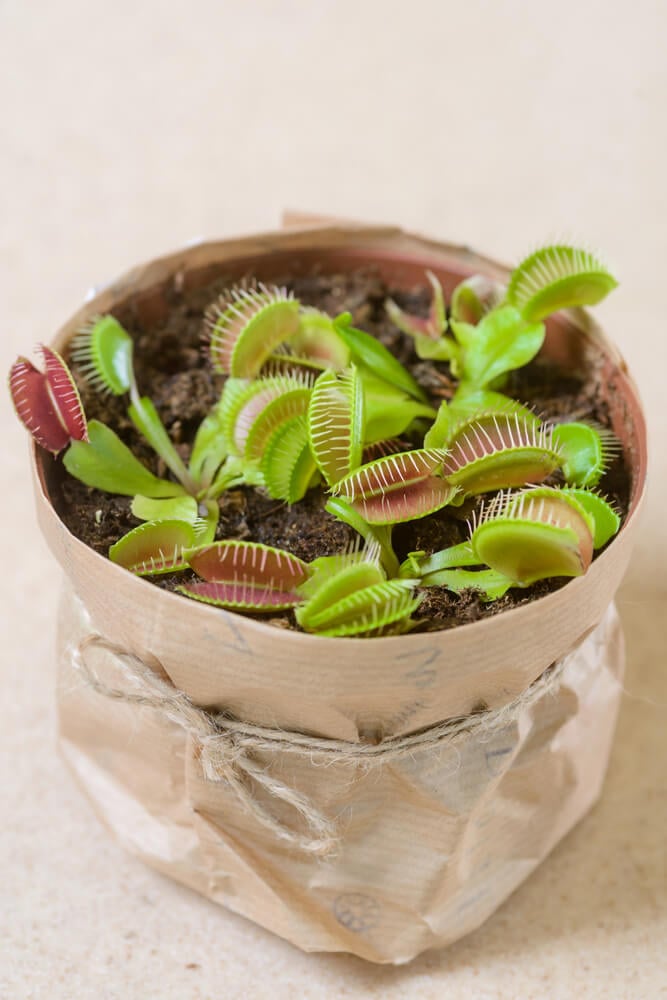
Any of these plants makes a superb addition to your garden, greenhouse, or plant cabinet. That said, we warn you. These plants get hungry! And – success with carnivorous plants requires understanding their specific needs, exceptionally pure water sources, and appropriate light and humidity. But the rewards of cultivating these evolutionary marvels are well worth the effort.
What about you?
- Will you try growing some carnivorous plants?
- Will you go with the classic Venus flytrap? Or, something more exotic?
- Will you try growing your carnivore plants indoors or outdoors?
Thanks for reading.
Have a great day!

